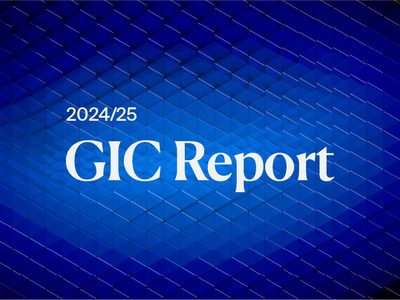This article was adapted from an interview with Arjun Khullar, Head of Integrated Strategies at GIC by the National Bank of Canada for their Family Advantage Spring 2022 Report on the landscape for family-owned businesses in Asia and globally, including their key strengths and most common challenges.
The landscape for family businesses in Asia and globally
The diversity of family business structures differs among geographies. In the UK, most of the listed companies are not family-owned. In Europe, family-owned businesses have become corporatised over time. Family businesses form a minority and where they are family-owned, the family, at times, has a limited presence in the business. In America, there is a combination of both, as there are still a lot of companies who are listed and have founding entrepreneurs who own anywhere between 20-40% of the company.
In Asia, there are far more family-owned businesses. Generally, the region is still living through its first generation of entrepreneurs. These business founders have come of age, having built up their conglomerates from scratch. And while these businesses might be entering a phase of corporatisation, the founding entrepreneurs are often still around. China has seen a lot of entrepreneur-led activity in the last 30 years. And entrepreneurship is an attractive prospect for people in China, partly because they have seen the level of wealth it has created.
Overall, you have to look at individual markets because they are all very different and at distinct phases of their evolution.
Common challenges faced by family businesses
The time of transition from the original entrepreneur to new ownership or management is always a challenging one. It depends to some extent on whether the entrepreneur has a clear view of what they want and what they want a professional to do. Are they willing to become more hands off? The manager who is coming in also has to understand that this is a very different dynamic from a regular listed company. They need to assess how comfortable they are with the entrepreneur still being involved. Because for at least a few years, the entrepreneur would tend to know a lot more about the business than the new CEO. So there has to be a relationship developed over time.
Another consideration when it comes to transition is the philosophy of generational succession from within the entrepreneur’s family. We discuss that because, one, it gives you an indication of the entrepreneur’s thinking. Two, that point of transition is a risk factor in the business. There are different risk factors depending on the choices that the entrepreneur makes. For example, if the business chooses to get an external CEO, then the issue is transition. Will the external CEO fit in? Can investors also be involved in that process? If it is a family member coming in, you have to outline an objective and transparent process for the board to assess the person’s skills and competencies to take the role. You have to also understand the board and ensure that it is going to make the right decisions for the business. This transition point is always a key moment in a business’ development and a key risk as an investor.
The key strengths of family businesses
Family-controlled businesses are often willing to take a long-term view and go through a few quarters or years of short-term pain to deliver a product they have great faith in. As an investor, we do like the fact that they are willing to make that short-term sacrifice. Though at the end of the day, we must also ensure that the product or innovation they are focusing on is of real value-add to the business. Well-run family businesses, given our experience in Asia, are often well-aligned with our views. They share GIC’s long-term perspective and are willing to make long-term investments.
We focus on investing capital over a very long time horizon, so the key question is how to ensure we keep it invested in assets with good risk-adjusted returns over the long term. With family businesses that hold a similar ethos, there is an opportunity to invest and keep compounding that investment without the pressure to push for an exit in five or seven years, unlike in private equity. In a sense, family-owned companies are a perfect fit for us, as a lot of entrepreneurs tend to also become intergenerational businesses, and we view GIC as an intergenerational fund.
From a family’s perspective, you want to have a partner who will be with you for the journey. And at GIC, we realise that when we invest in businesses, there are going to be ups and downs and it is something we understand and are willing to stay true to. We aim to work with entrepreneurial families who share similar values to GIC, such as integrity, and treating their partners fairly. It is important that we are able to work together to solve issues when things get tough.
But that is also why when we have discussions with families and invest with them, we spend a lot of time getting to know them and letting them get to know us as well. It’s very important to build trust and find out what works for them, what motivates them, how they think, how they hire, and what their philosophies and values are.
GIC as a long-term partner for family businesses
The Integrated Strategies Group (ISG) was set up about nine years ago and our philosophy was to try and create new investment opportunities for GIC that were beyond what we were already doing. The group, as the rest of GIC, has great flexibility to invest across public and private markets, across different asset classes and geographies. We spend a lot of time working with families, family-owned businesses and entrepreneurs. One of the main priorities for ISG is to invest with families, and we do so in a number of ways. One, we provide growth capital to their businesses, both for public or private companies. Second, we partner with families on shareholder reorganisations or when a family member wishes to exit and needs financing to do so. Here, GIC’s flexibility to be able to invest across both private and public markets can be helpful.
Another advantage that GIC brings to family businesses that we engage with is the network that we have and share with our partners and investees. How GIC is positioned – with an Asian network and contact with firms in Europe and the US – is a plus point for families in various geographies who want access to our global connections in Asia and vice versa. GIC’s experience of investing across geographies, asset classes and industries for a long time gives us deep and relevant institutional knowledge which we also share with our investees. Ultimately, their success will also be our success.







